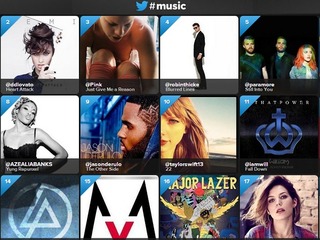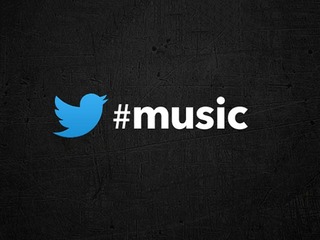DUOS expands AI capabilities to help seniors apply for assistance programs
It will complete and submit forms, and integrate with state benefit systems
Read more...
After the failure that was its #Music app, you would not be alone in thinking that Twitter maybe would shy away from that vertical, at least for a little while. The app only survived a year, and was not the company's shining moment by far.
But nope, that seems to be the exact opposite of what it is going to do.
In fact, the company is already meeting with some of the biggest companies in the business, in order to form partnerships, according to a report out from the Wall Street Journal on Wednesday.
This week, Twitter apparently met with Beats Music, in which the company proposed setting up a partnership that would promote Beat's music-streaming service. Twitter is also looking to do the same with SoundCloud.
In addition, Twitter is also currently working with Vevo to showcase short music video clips on the site.
The company is reportedly looking for a new way to break into the business after it was forced to pull its #Music app from the iTune's store last week. The app will officially shut down on April 28th, its one year anniversary.
The ultimate point of the standalone app seemed to be to get people to listen to music that artists themselves recommended on Twitter.
It's #NowPlaying feature allowed users to see the songs that had been tweeted by the artists and people they follow on Twitter. Another feature, called Suggested, analyzed the artists a user followed, in order to recommend songs it thinks they might like.
Users could also listen to music from artists that other artists follow. For example, if someone was following rapper Wiz Khalif, users could then search his name, then tap one of the artists Khalif is following and then start listening to their music.
It allowed subscribers of Rdio and Spotify to log in to their accounts and stream full tracks through Twitter.
According to the reports from last year, the app was developed in isolation and was never fully integrated into Twitter. While not much is known about what the new music strategy will be, it seems likely that it will be more incorporated into the existing service.
One thing that seems to be off the table at this point, not surprisingly, is a debuting a new stand-alone app.
Twitter is also not pursuing any kind of license agreements with the major catalogs, which are a big expense even for the premiere music-streaming services.
It's not a big surprise that Twitter is not giving up on the music space.
In September of last year, the company hired Bob Moczydlowsky, the former senior vice president of product and marketing at Topspin Media, as its new head of music. In his new role, Moczydlowsky was put in charge of handling music partnerships, as well as hiring two new deputies who will handle artist relations.
Last month Twitter entered into a partnership with music industry firm 300 Entertainment in order to gain deeper insights into how users interact with music on the site.
We all knew Twitter would get back to music one day; I just thought it would be after the ink dried on #Music's will.
VatorNews reached out to Twitter to find out more information, but the company was unavailable for comment.
(Image source: dmuth.org)
It will complete and submit forms, and integrate with state benefit systems
Read more...The bill would require a report on how these industries use AI to valuate homes and underwrite loans
Read more...The artists wrote an open letter accusing OpenAI of misleading and using them
Read more...Startup/Business
Joined Vator on
Twitter is an online information network that allows anyone with an account to post 140 character messages, called tweets. It is free to sign up. Users then follow other accounts which they are interested in, and view the tweets of everyone they follow in their "timeline." Most Twitter accounts are public, where one does not need to approve a request to follow, or need to follow back. This makes Twitter a powerful "one to many" broadcast platform where individuals, companies or organizations can reach millions of followers with a single message. Twitter is accessible from Twitter.com, our mobile website, SMS, our mobile apps for iPhone, Android, Blackberry, our iPad application, or 3rd party clients built by outside developers using our API. Twitter accounts can also be private, where the owner must approve follower requests.
Twitter started as an internal project within the podcasting company Odeo. Jack Dorsey, and engineer, had long been interested in status updates. Jack developed the idea, along with Biz Stone, and the first prototype was built in two weeks in March 2006 and launched publicly in August of 2006. The service grew popular very quickly and it soon made sense for Twitter to move outside of Odea. In May 2007, Twitter Inc was founded.
Our engineering team works with a web application framework called Ruby on Rails. We all work on Apple computers except for testing purposes.
We built Twitter using Ruby on Rails because it allows us to work quickly and easily--our team likes to deploy features and changes multiple times per day. Rails provides skeleton code frameworks so we don't have to re-invent the wheel every time we want to add something simple like a sign in form or a picture upload feature.
There are a few ways that Twitter makes money. We have licensing deals in place with Google, Yahoo!, and Microsoft's Bing to give them access to the "firehose" - a stream of tweets so that they can more easily incorporate those tweets into their search results.
In Summer 2010, we launched our Promoted Tweets product. Promoted Tweets are a special kind of tweet which appear at the top of search results within Twitter.com, if a company has bid on that keyword. Unlike search results in search engines, Promoted Tweets are normal tweets from a business, so they are as interactive as any other tweet - you can @reply, favorite or retweet a Promoted Tweet.
At the same time, we launched Promoted Trends, where companies can place a trend (clearly marked Promoted) within Twitter's Trending Topics. These are especially effective for upcoming launches, like a movie or album release.
Lastly, we started a Twitter account called @earlybird where we partner with other companies to provide users with a special, short-term deal. For example, we partnered with Virgin America for a special day of fares on Virginamerica.com that were only accessible through the link in the @earlybird tweet.
What's next for Twitter?
We continue to focus on building a product that provides value for users.
We're building Twitter, Inc into a successful, revenue-generating company that attracts world-class talent with an inspiring culture and attitude towards doing business.


